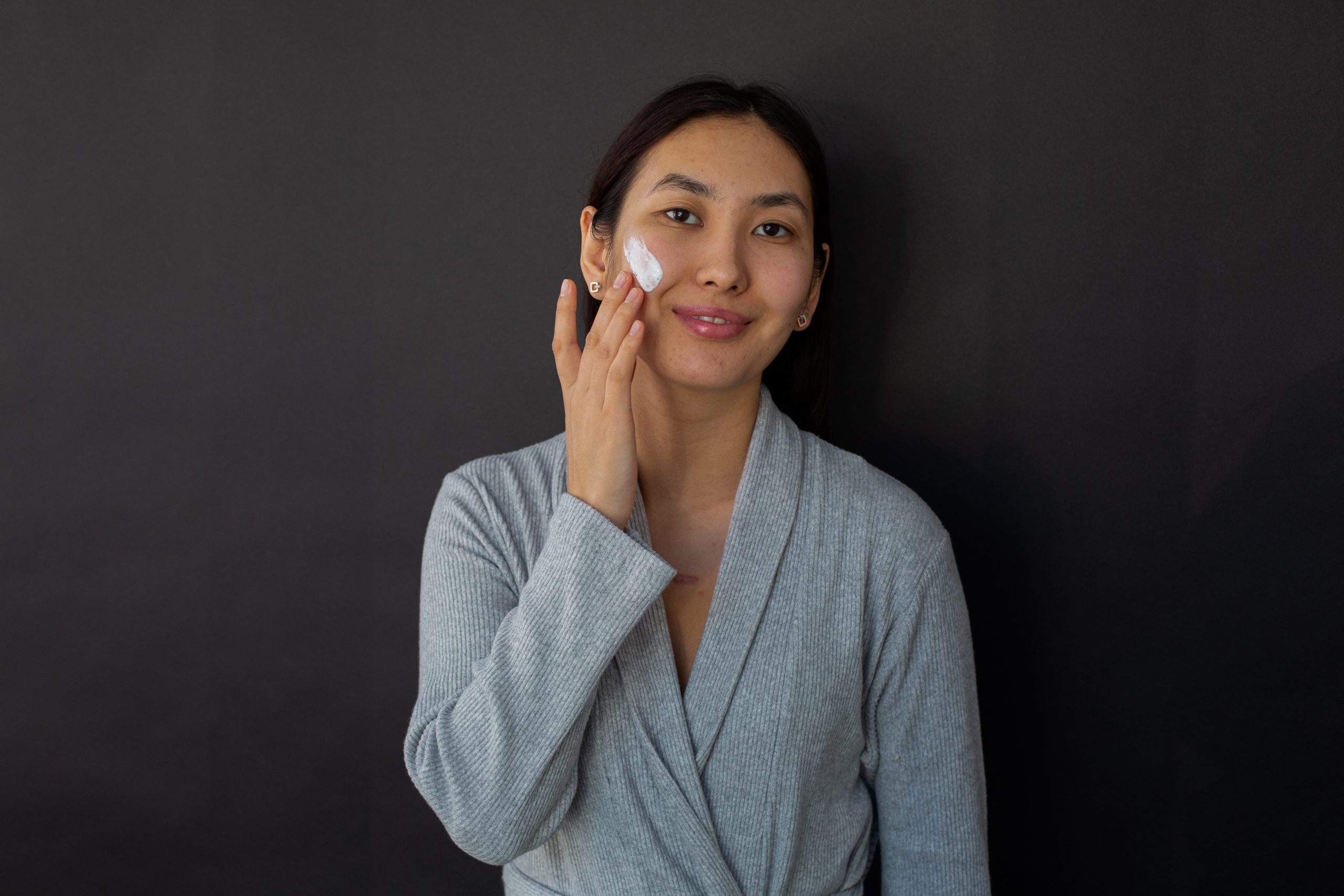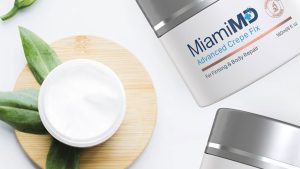Salicylic Acid Serum: Choosing The Right One

Would you put acid on your skin if it could help you look your best? While that sounds extreme, one of the most popular ingredients in many skincare products falls into this category… salicylic acid.
But does it live up to the hype? And how can including a salicylic acid serum in your current skin care routine change or better your skin?
If you incorporate it with other supportive products, like the functional beauty we offer at Miami MD, you may be shocked at how great your skin can look!
Why Acid?
If you’re new to skin care, don’t let the “acid” part of the name scare you. Acids are very commonly used in many different skin care products, and all that word means is that it has a pH balance of less than 7.
When it comes to the specific acids that are used in skin care products, they are divided up into one of two categories:
Alpha hydroxy acids, which include commonly seen ingredients like glycolic acid and lactic acid, are used as chemical exfoliants that impact the top layer of the skin — the epidermis.
It works on the bonds that exist between skin cells (known as desmosome bonds), mainly the dead ones that sit on the epidermis, breaking them apart so that they can be removed from the skin.
Because alpha hydroxy acids (or AHAs) are water-soluble, they are not as likely to remove any of the skin’s natural oils, known as sebum, which help to form the all-important moisture barrier.
Beta hydroxy acids, which is the category that salicylic acid falls into, work similarly. The main difference between the two is that beta hydroxy acids (or BHAs) are oil-soluble as opposed to water-soluble. That allows them to get even deeper into the pores and break up excess sebum from further inside the skin.
Salicylic acid is the most common of the BHAs, by far, although you may occasionally see citric acid used.
Salicylic Acid 101
Whether you use it as a toner, serum, cleanser, or spot treatment, the chemical formulation for salicylic acid remains essentially the same.
The name doesn’t come from its chemical formula, though, as a lot of other acids do. Salicylic acid was actually named for the most common source for the ingredient… willow tree bark (“salix” is Latin for “willow tree”).
As we mentioned, the real benefit of salicylic acid (and other BHAs) is its oil solubility. The reason that this is such a powerful advantage is that the skin, and especially the stratum corneum (the very top layer of the epidermis) is made up of lipids.
Oil and water naturally repel each other, which is why AHAs only work on the surface of the skin. With an oil-soluble hydroxy acid, it can actually penetrate into the pores themselves.
The products that you use, like a salicylic acid serum versus a salicylic acid cleanser, can also make a difference.
Who Can Benefit The Most From A Salicylic Acid
With the right knowledge, salicylic acid can work for any skin type. The caveat with this is that those with sensitive skin should be extra cautious with when and how they apply it.
However, as with any skin care ingredient, salicylic acid works best when used for a few specific issues.
First of all, due to its ability to penetrate deeply into the pores, salicylic acid is one of the most popular ingredients for those with acne-prone skin. Because it breaks up the oil from the inside out, instead of just clearing it from the outside of the skin, it is extra efficient in keeping the pores as clear from obstruction as possible.
While it is inside of the pores, it can dissolve plugs of keratin (the protein that makes up the skin, as well as the hair and nails) and other debris that may have made its way inside. This greatly reduces the risk that the pores will become plugged and lead to blemishes, especially both blackheads and whiteheads.
Due to the cause of cystic acne, however, it is less effective with that specific type of acne.
Salicylic acid can also help to even out the skin tone and even lead to some anti-aging benefits, especially in higher percentages. The exfoliating properties of the ingredient that provide these benefits.
For one, the dead skin cells that so commonly sit on the surface of the skin can lead to skin that looks dull. Exfoliants like salicylic acid serum help to clear away those cells, returning a natural glow to the skin.
In addition, exfoliating the skin helps encourage a quicker turnover of the cells, which can also stimulate collagen production. This makes the skin look not only brighter but also more firm.
What Form Of Skincare Products Does Salicylic Acid Come In?
Due to salicylic acid’s popularity in skin care, it can be found in many different types of products. While this is a good thing when it comes to choice, it can be difficult to sort through for beginners.
Here’s a brief overview of the types of products out there, and what their main benefits are:
- Salicylic Acid Cleansers: For those who are new to salicylic acid, or people who are aware they tend to have sensitive skin, salicylic acid cleansers are a great place to start.
Because they generally contain a lower amount of the ingredient than other products and are quickly washed off the face, they can help clear the skin without sitting on it long enough to be irritating.
- Salicylic Acid Toners: The next step up from cleansers are salicylic acid toners. Used after cleansing the skin thoroughly, toners are swept onto the skin using a cotton pad.
They are normally fairly light in consistency and absorb quickly, but can be irritating to the skin and should be used occasionally when first starting. They also make great primers for any serums you’re using.
- Salicylic Acid Serums: When it comes to getting the most benefit out of the ingredient, salicylic acid serums are the way to go. They are applied after your skin has been cleanser (and toned, if you use a toner), so that the pores are as clean as possible.
That allows the serum to penetrate as deeply as possible into the pores, where it can work overtime to clear and brighten the skin.
- Salicylic Acid Spot Treatments: For those suffering from acne, spot treatments can be applied directly to the blemishes. This can also be effective in helping to manage hyperpigmentation.
How To Add Salicylic Acid Serum Into Your Existing Routine
When incorporating any new skin care product into your routine, it’s essential that you go slowly. If you are already aware that you have sensitive skin, it may be best for you to start with a patch test.
If you’re unfamiliar, a patch test involves applying just a small amount of product on a tiny area of the skin and waiting 24 hours to rule out any potential reaction.
When choosing a salicylic acid serum, make sure to purchase it from a company that you can trust. You should always check the ingredient list, as well, and verify that they are considered non-comedogenic — meaning they will not clog your pores.
Look for between 1 – 4% salicylic acid, as anything more than that will need to be prescribed by a dermatologist or other medical professional.
In terms of where in your routine to add in your salicylic acid serum, there is a recommended order. Always start with cleansing your skin thoroughly — including taking your makeup off with makeup remover prior.
Some people also choose to double cleanse, especially those who wear foundation or work outside. Once your skin is dry, it’s time for a toner. Always apply the toner with a clean, cotton pad and never with your fingers.
After your toner has dried, you’ll want to apply any spot treatments, like Miami MD’s Intensive Eye Repair Serum. That allows those treatments to be as effective as possible for your specific concerns.
After those have dried, it’s time for your salicylic acid serum. If you’re using any other all-over facial serums, start with the thinnest in consistency and finish with the thickest. And finally, moisturize. It’s important to never skip this step, especially with how drying salicylic acid can be.
In Conclusion
Salicylic acid serums can be beneficial for anyone, especially those with acne-prone skin or people experiencing age-related concerns. The small but mighty ingredient can be incredibly effective, but it can also be irritating to the skin if you don’t incorporate it into your routine the right way.
Knowing how to appropriately use and layer all of your skin care products is essential to experiencing the most benefit from all of your products. We all deserve to love the skin that we’re in, after all!
Sources:
Salicylic acid / HOC6H4COOH | NCBI
Salicylic acid treats acne vulgaris by suppressing the AMPK/SREBP1 pathway in sebocytes | NIH





